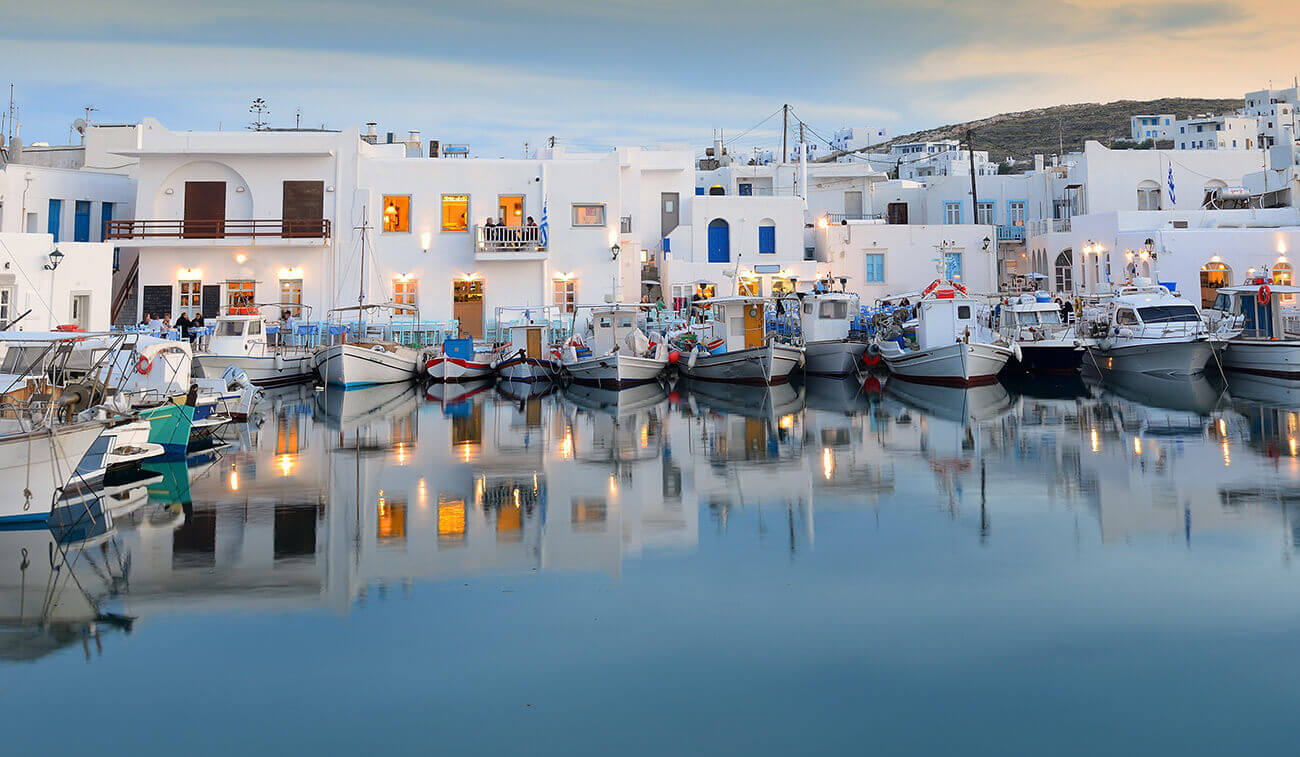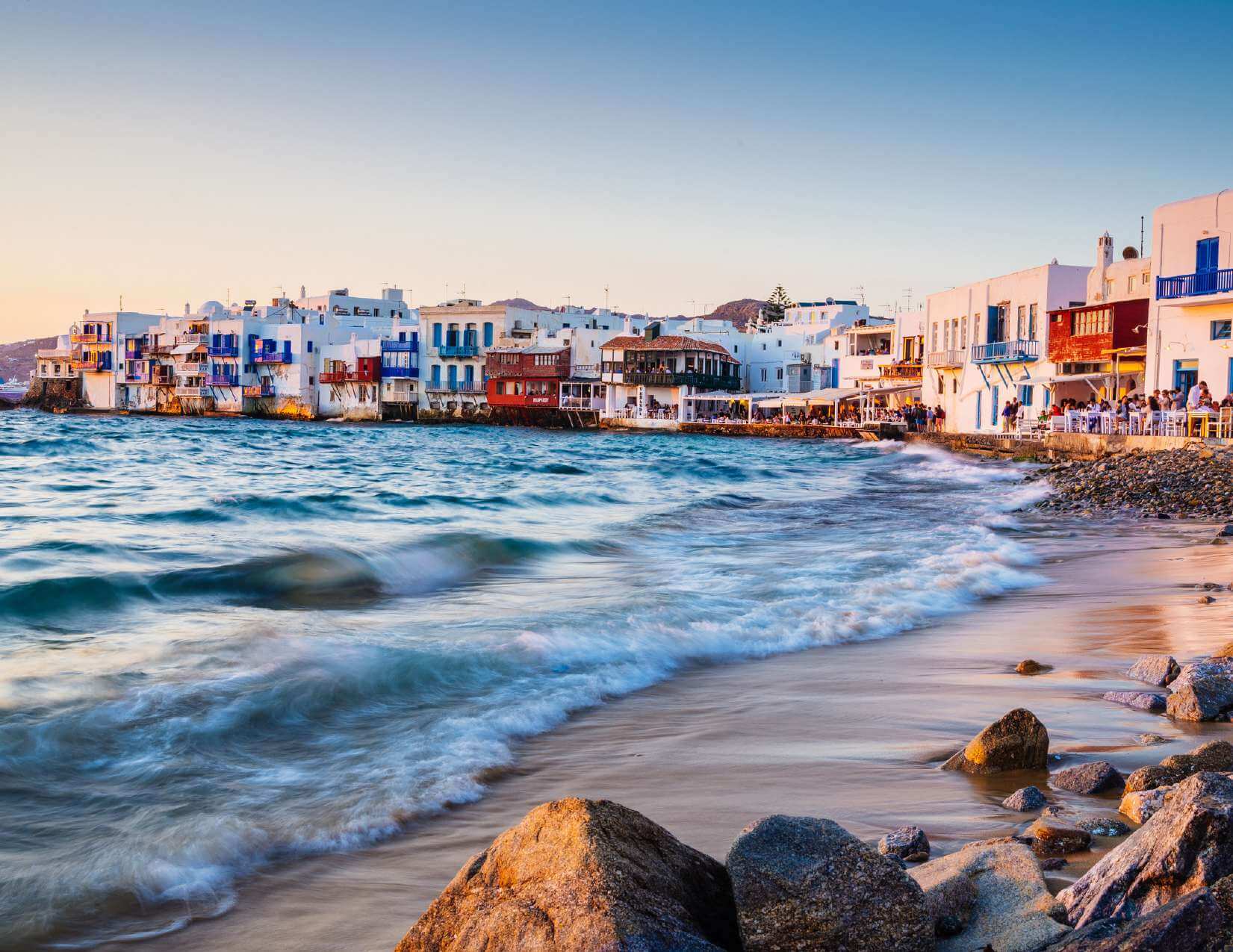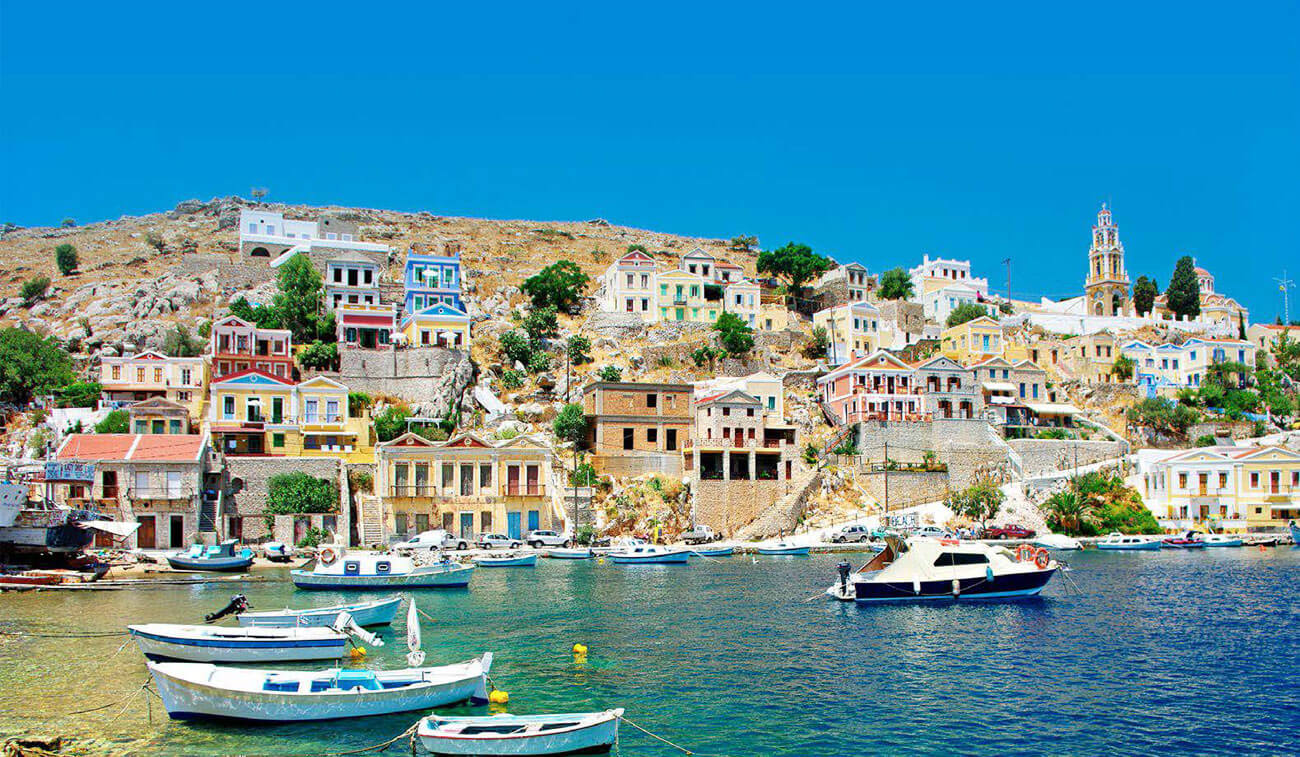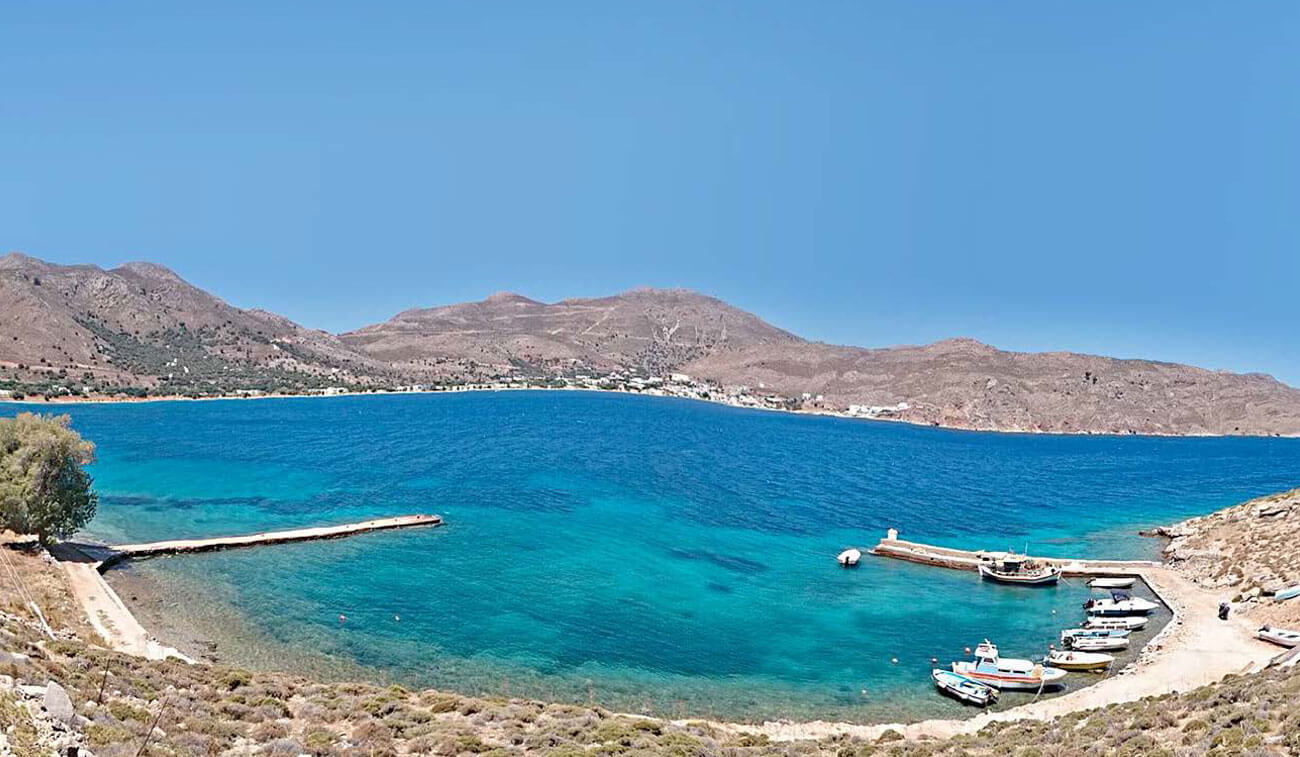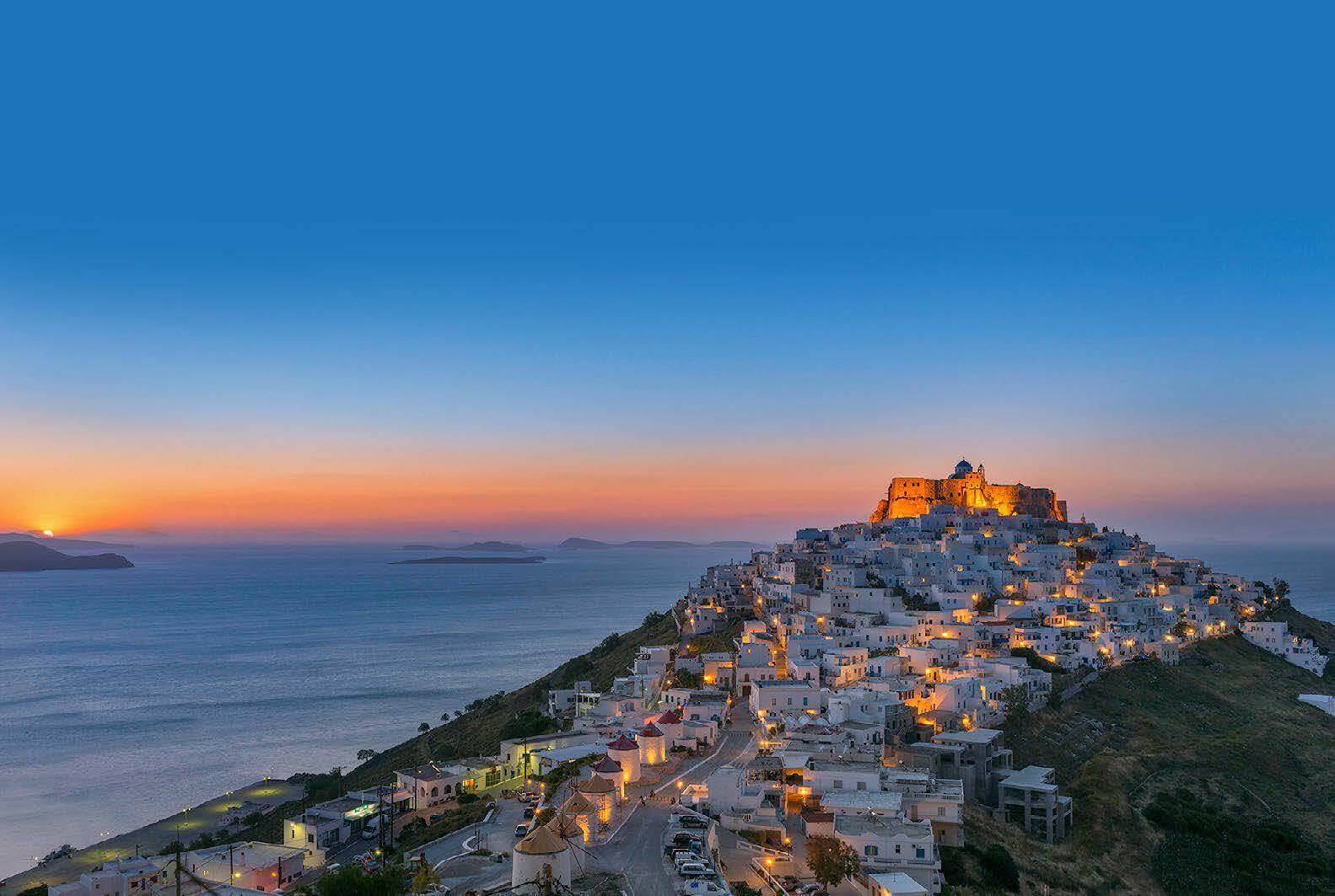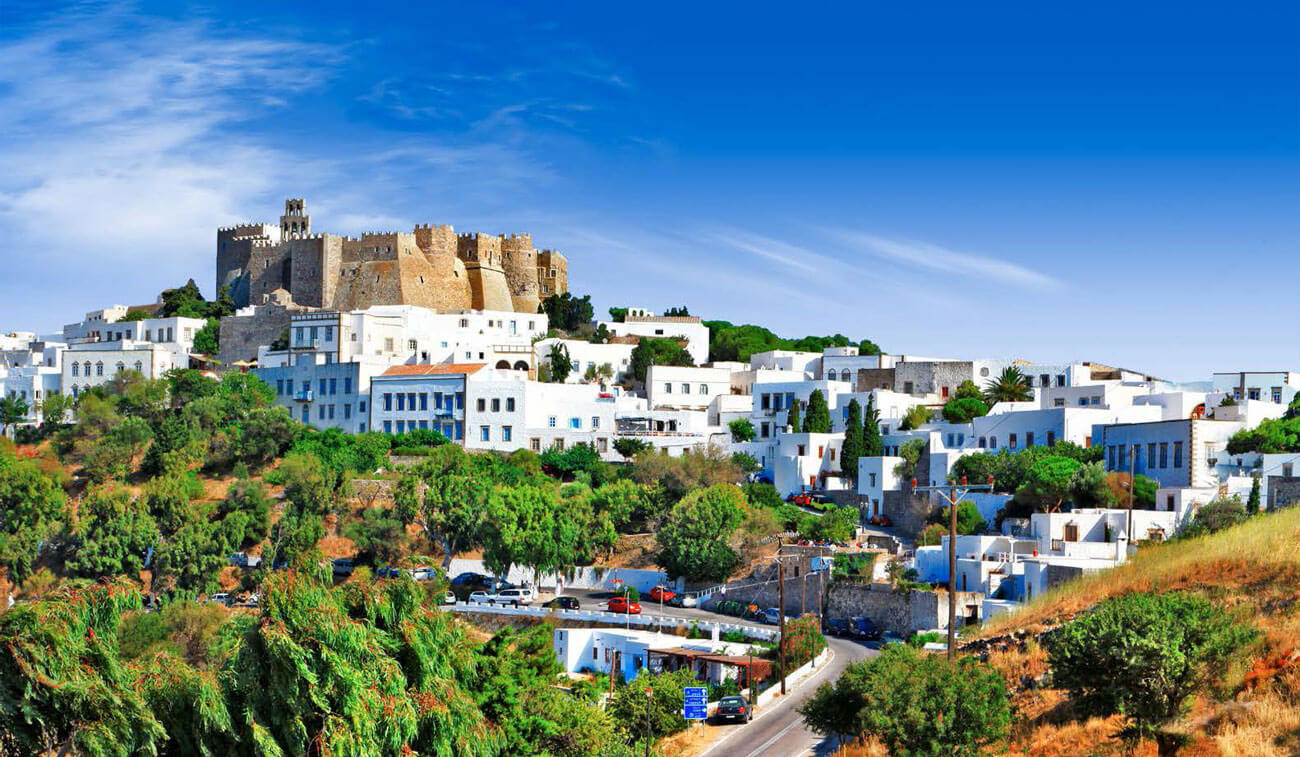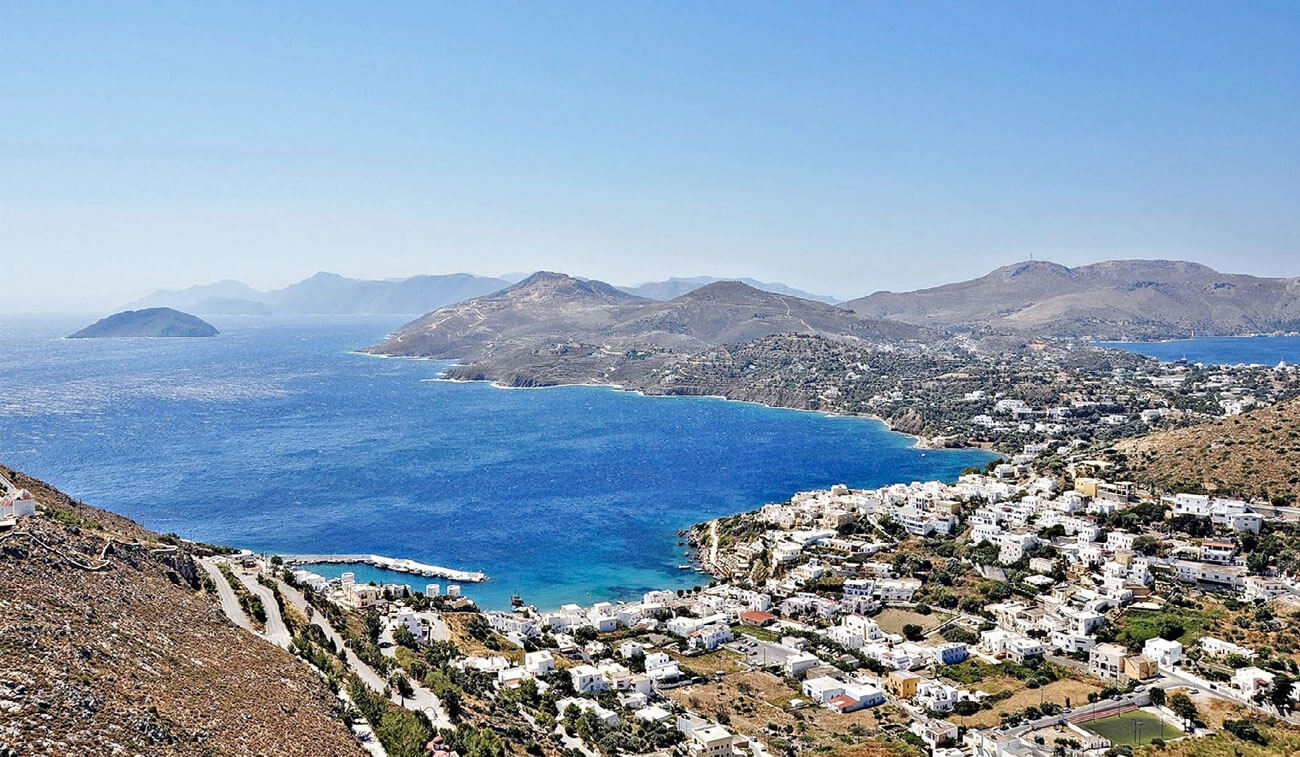IOS ISLAND
Íos or Niós, as the locals call it, is one of the most beautiful islands of the Cyclades, like a flower, as its name “Ion” denotes. According to the ancient tradition, Íos was the homeland of Homer’s mother and the final resting place of the great epic poet. Upon reaching the island, the view before you is enchanting: as pretty as a picture, Chora lies very close to the harbor in Ormos and greets the travelers, built in an amphitheater -like manner on the slope of a hill, on the top of which there are ruins of a medieval castle. This is a listed traditional village, one of the finest examples of Cycladic architecture.
Snow-white little houses, picturesque arcade-covered alleys (“stiyádia”), the twelve windmills, churches with arched belfries and light blue domes create a unique residential area. Chora’s sheltered alleys is the “stage” where Koúnia, an ancient local custom is performed every May, as follows: young men make swings for young ladies who rock themselves while listening to traditional love songs being sung to them in the form of a dialogue.
Ios offers many activities, including hiking, watching the amazing sunsets, visiting historic sites, and enjoying the laid-back lifestyle of Greece. For those who love hiking Ios is the ideal destination. Its hilly morphology and the innumerable paths opened by shepherds on its hills enable visitors to see amazing places of wild beauty and enjoy the view to the nearby islands. If you want to experience daily farming works performed in the old fashioned way, local stock farmers wit be willing to show you through the entire production process (grazing, milking, cheese-making).
Explore! Mylopótas, Magganári, Psáthi, Yialós, Kálamos and Ayia Theodóti beaches are known worldwide –among others– to be top choices for dives in the island’s emerald waters. In order to explore the inland, follow the paths that shepherds prefer to take (Ayia Theodóti- Hóra, Ayia Eirini-Valmás Beach, Hóra-Pýrgos-Psáthi, Hóra -Ayios Spyridonas-Perivólia-Ayios Prókopas-Pelekaniá) and discover the pristine natural beauty of Íos through magic scents and colours.
PAROS ISLAND
Paros is so fascinating on so many levels that many people love it having seen only one of its faces. Don't jump to conclusions about what you like, get to know the island first and find your "own" Paros, the face that suits you best. No doubt, though, it will charm you even if you see a different side from the one expected.
The island of Paros is famous for its golden beaches, clear blue waters and nightlife. However, it has much more than that to offer visitors, who will see a different island, offering many alternatives: its rich natural resources, the fascinating cultural heritage, the unique customs, the original traditional dishes and the famous wine, are some of the island's secrets that make visitors return.
Parikia, the capital of Paros, is a beautiful Cycladic village with whitewashed cubic houses and impressive neoclassical mansions. A well preserved 13th century Venetian castle stands proudly on a hill at the center of the village offering an amazing view of Parikia.
Wander through beautiful traditional villages like Naousa, a colorful village, where the ruins of a Venetian fortress stand at the entrance to its small harbor. Lefkes is located at the highest point of Paros and enjoys stunning views of the island. The village is set up in the mountains
and is surrounded by a rich green landscape. It has very well preserved Cycladic and neoclassical buildings, beautiful squares and narrow marble alleys.
Paros offers quality facilities to practice windsurfing, kite surfing, diving, horse riding and trekking. The island has several diving schools (the beaches Chrysi Akti, Santa Maria, and Pounta are ideal for diving). Pounta is the best beach for kite surfing, while the favorite beaches for windsurfing are Tserdakia, Chrysi Akti, Santa Maria and Pounta. The island also has surfing clubs. Amateur fishermen will find ideal spots on the coasts of Paros.
MYKONOS ISLAND
Mykonos is a wonderful Cycladic island, worth visiting at any time of the year. However, it is a must to enjoy the days of its summer glory, when it literally becomes an international village, when its community of believers make it a sight worth seeing, when one can experience the unique feeling that everything and everyone is in Mykonos.
According to mythology, Mykonos was formed from the petrified bodies of giants killed by Hercules. And did you know that the island took its name from the grandson of Apollo, “Mykonos”?
Set out on a journey to discover a fascinating world where glamour meets simplicity. On Mykonos celebrities, college students and families mingle together to celebrate the Greek summer. However, despite its cosmopolitan character, Mykonos remains a beautiful and picturesque island, whose all white Chora lies next to the sea, with golden beaches, friendly and smiling people and a continuous link with history lasting for centuries. If you think you've seen someone that looks famous, then you're probably right. In Mykonos you'll sit right next to famous actors, singers, stars, TV personalities, top models.
In Mykonos there are beaches that cater for all tastes: family beaches such as Lia, trendy beaches like Psarou and quiet beaches such as Agios Sostis.
In contrast to other Cycladic capitals, the capital town (Chora) of the island is not built in the shape of an amphitheater but instead spreads out over a wide area. It is one of the best examples of Cycladic architecture and a spellbinding attraction for visitors. Stroll around its narrow marble streets and admire whitewashed houses with colorful doors and window frames, bougainvillea trees in purple bloom and hidden churches.
KEA ISLAND
Due to its proximity to Athens, Kea (also called “Tzia”) is an easily accessible beauty with a scenery variety: steep mountains, small fields, olive groves, vineyards, valleys, picturesque coves, exciting hiking trails and off-the-beaten-track beaches. On the island with the largest oak forest in the Cyclades birdwatching is a real delight. For those who are into geology, there are plenty of small caves (like in Kálamos and in Áyios Timótheos). 36 km long cobbled trails will lead you to the four city-states of the ancient times: Ioulis, Karthaia, Koressia, Poiessa).
Situated in the centre of the island, at the site of the ancient citystate by the same name, the capital of Kea, Ioulis, is a very picturesque town with ceramic-tile roofed houses, cobbled streets, arched passages, steps and squares. The island was named after Ceos, a hero from Nafpaktos who settled on the island in the 12th century BC. The island was later named Tzia during the Venetian occupation. Kea played an important role in the flourishing of the Cycladic civilization and was homeland to great figures of ancient Greece, such as the poet Simonides.
For hikers, Kea is a paradise. Paths with a total length of 36 kilometres, 65% of which are stone-paved, cross dreamy routes through dense forests of tall oaks and lead to beautiful isolated beaches.
SYMI ISLAND
While approaching the port of Symi, one has the overwhelming feeling of entering a perfectly painted image of a scenic traditional village. As a rule, people remain agape and cannot take their eyes off the spectacular sight. The few who can resist the superb spectacle of the town of Symi stretching its impeccable architecture on the slopes of the surrounding hills, take off their eyes to look at their book guides.
TILOS ISLAND
The ragged, mountainous terrain of Tilos, its densely forested ranges, its hilly vistas, and its verdant valleys, are home to four hundred species of flowers and herbs and the habitat of rare species of birds such as Bonelli’s eagles, hawks, nightingales, goldfinches, herons and bee-eaters.
ASTYPALAIA ISLAND
Located exactly where the Dodecanese meet the Cyclades, the island of Astypalaia boasts a centuries-old history, whitewashed villages and sun-drenched beaches. Embark on a fascinating trip where the deep blue of the sea meets the bright white coloursof beautiful island houses. Despite its small size, Astypaleafeatures numerous bays and coves, a remarkable coastline of principally secluded, difficult to access but absolutely rewarding beaches, plus a few organized ones. The island remains faithful to high quality aesthetics, regarding its moderate touristic infrastructure, traditional settlements, as well as the eating, shopping and lounge nightlife hang-outs.
PATMOS ISLAND
Worldwide known as a sacred island for it is the place where Saint John wrote the Book of Revelation, Patmos is an ideal destination for nature lovers thanks to its lace-like coastline, sheer cliffs and volcanic soil.
LEROS ISLAND
According to mythology, this is the island of Artemis (Diana), the goddess of forests and hunting. It is ideal for peaceful vacation, while you will be amazed by its impressive architecture, clean coasts and the imposing castle of Panaghia, on Apitiki hill. The picture is completed with the hidden bays, hills, pine-trees forests, olive groves, and the law plain areas full of water springs.
KALYMNOS ISLAND
Climbing up giant vertical rocks; diving in a sea bottom where centuries-old ship wrecks lie; enchanting caves; wonderful beaches und picturesque island settlements. This is Kalymnos: a destination offering more than you can imagine! Welcome to Kalymnos, the fourth largest island of the Dodecanese Group is widely known as an international sponge-harvesting trade center.



